In 2023, the City kicked off a refresh of the Bicycle Master Plan approved in 2015. This post provides the historical context for the update, the elements that have been the focus of the refreshed Bicycle Master Plan, information on how to get involved, and embedded links for further reading.
As of June 2024, the Bicycle Master Plan is in the community input phase with no clear timing for Council approval or final input from boards and commissions (e.g., the Planning Commission, Citizens Advisory Committee on Transportation (CACT), Environmental Sustainability Council (ESC), and Economic Development Authority (EDA)). This month, the City will host community feedback meetings on (1) the East/West Pedestrian and Bicycle Connection between the W&OD Trail and Secondary Schools Campus (June 20, 2024), (2) North West Street (June 25, 2024), and (3) South West Street (June 27, 2024). Keep an eye on the project website for additional meetings on other priority routes (e.g., Park Avenue, Great Falls Street), City-wide community input on more mature plans, and final plan reviews and approval.
The Bicycle Master Plan was originally slated to come to the City Council for approval in June 2024, but City staff received guidance from Council this spring that more community input was needed, resulting in the planned community meetings for June and likely future meetings. The plans shared with the public in March 2024 provided an existing conditions assessment, a partially completed markup of the new Master Plan, and a series of conceptual options for roadway design on one block of each of the priority routes. More work is needed to select a single conceptual design with nuances for the full length of the road (e.g., treatment at intersections, dealing with wider and narrower road sections), finalize the draft of the broader Bicycle Master Plan (e.g., elements of the Master Plan beyond roadway infrastructure such as education), and incorporate community, board and commission, and Council input.
What is a Bicycle Master Plan?
A Bicycle Master Plan is a core municipality planning document. Falls Church has a Comprehensive Plan revised and adopted in pieces over time, with the latest Vision for the City adopted in 2017. One chapter of the Comprehensive Plan covers transportation, Mobility for All Modes, and dates to 2014. The Bicycle Master Plan provides further details on plans for bicycling – goals for use of this transportation mode, desired infrastructure such as bike lanes, plans for education, funding needs, and more. This Master Plan guides more detailed work, such as Small Area Plans, repaving projects, street projects such as Neighborhood Traffic Calming or the Greening of Lincoln Avenue, and private development projects that affect the roadway (or proffer roadway improvements).
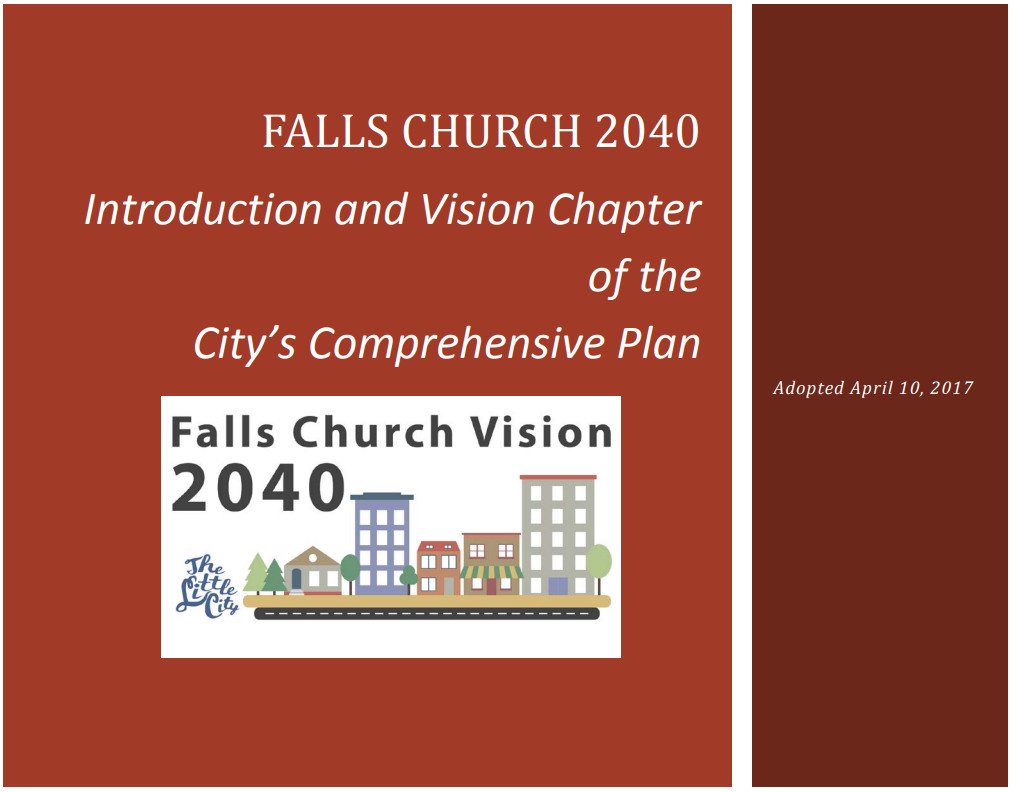
Some municipalities use a broader “Active Transportation Plan.” Fairfax County, for example, also includes plans for walking, scooters, and more. Some Bicycle Master Plans are very high level and general, leaving the specifics to individual projects (as Falls Church’s 2015 Plan was), while others are highly prescriptive with elements written into law.
Origin of the 2015 Bicycle Master Plan and its impact
Prior to 2015, the City had no overall plan for facilitating or considering bicyclists in the City. The W&OD Trail, built in the City in 1974, has been the predominate bicycling feature and is owned by NOVA Parks. While infrastructure focus had been on the W&OD, bicycling around Falls Church, especially to school, has been common since the City’s founding. Interest nationwide in bicycling for transportation accelerated in the 2000s, and in 2008 Arlington passed its first Bicycle Master Plan. Arlington’s interest in biking then spilled over to Falls Church’s City Council, boards and commissions, and City staff.
The first attempt at an integrated plan for bicyclists and pedestrians in the City was made from 2010 to 2012, though disagreements on the tradeoffs led to the plan being abandoned. Nonetheless, many of the ideas suggested then found their way into subsequent individual projects. For example, in 2014 the Economic Development Authority (EDA) paid for the installation of “sharrows” and wayfinding signs to mark routes from the W&OD to downtown. You can read a more detailed history of bicycling in Falls Church City here.
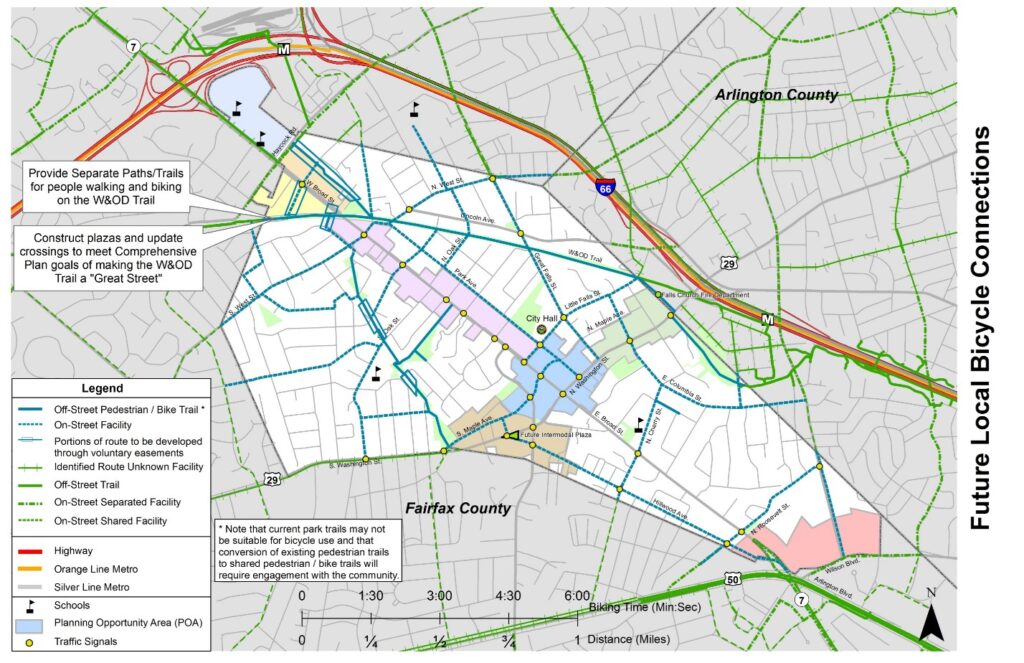
In 2015, the City Council approved the Bicycle Master Plan after extensive community engagement. In the following years, bike lanes were installed in the most straightforward locations (Hillwood Avenue, Roosevelt Street, South Maple Avenue in 2017), Capital Bikeshare came to the City (2019), the W&OD Dual Trails were built by NOVA Parks (2021), and funding and partnership with Fairfax County were secured to build a shared use path from the W&OD to Broad Street along Shreve Road (coming in 2027).
However, other priorities in the plan stalled, in part due to the time demanded of City government by growing private development and rebuilding City Hall, the high school, and the library. The rest of the proposed bike network was not planned, budgeted for, or built. The implementation chapter of the plan was forgotten and other projects done on “future bike routes” gave no consideration to completing the bicycle network. Bicycle education and applying for the Bicycle Friendly Community award were put on hold.
Why Council put a refresh of the Bicycle Master Plan on staff’s work plan
In 2022, the City Council asked staff to refresh the Bicycle Master Plan. The ask was the result of several converging factors. Interest in bicycling grew substantially during COVID because biking was a means of socially distanced recreation and transportation and as a result of the growing quality and availability of electric bicycles.
The Citizens Advisory Committee on Transportation (CACT) and Environmental Sustainability Council (ESC) began calling on Council for more action to support bicycling in the City to meet the goals of Mobility for All Modes and City and regional climate targets. Increased development was also a key factor – with only so much land, walking and biking have become more attractive and popular as key components to offset added car traffic and parking demand from the growing number of City residents and businesses.
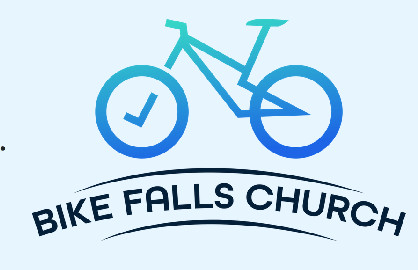
A City-specific bicycle advocacy group, Bike Falls Church, was founded in 2021, and members have pushed for safer bicycle routes to schools and businesses. Virginia Tech graduate students studied the City’s old Bicycle Master Plan and the state of bicycling in the City in a 2022 project that identified several opportunities.
Many bicycle-related items in Council work plans since 2020 were not implemented, such as adding physical protection to existing bike lanes or installing new bike lanes. The combination of these factors led to a proposal that a refresh of the Bicycle Master Plan would be the most effective way to develop a cohesive blueprint for the future of bicycling in the City and ensure that plan had sufficient community engagement and support, and Council backing for prioritization and funding.
Fundamentals of the emerging 2024 Bicycle Master Plan: What to watch
Below are some of the key focus areas of the new Bicycle Master Plan, based on community input, the Virginia Tech students’ report, and comments from the City Council, Planning Commission, the CACT, the ESC, and the EDA.
Bicycle Routes on Priority Routes
A key focus of the plan, as advocated by the City Manager, is to detail key routes in order to get community buy-in and funding and to enable construction over the next few years. These routes, based on community input, are listed below. The first five are often referred to as the “five priority routes.” While the final three were prioritized by staff and described to City Council as priorities, they are covered by separate projects.
- North West Street,
- South West Street,
- East Broad Street (Roosevelt to Maple),
- Great Falls Street,
- Park Avenue (West of Virginia Avenue),
- Park Avenue (East of Virginia Avenue is covered by the Park Avenue Great Streets Project),
- Lincoln Avenue (designs are being created in connection with the Greening of Lincoln Project), and
- the link from the W&OD to Mustang Alley north of Broad Street (e.g., Offutt Drive or another route around the Birch & Broad Shopping Center, which is being studied as part of a separate grant).
Key questions remain: Will the plans for these routes make these roads comfortable for kids biking to school or senior citizens biking to appointments? What are the tradeoffs in each option?
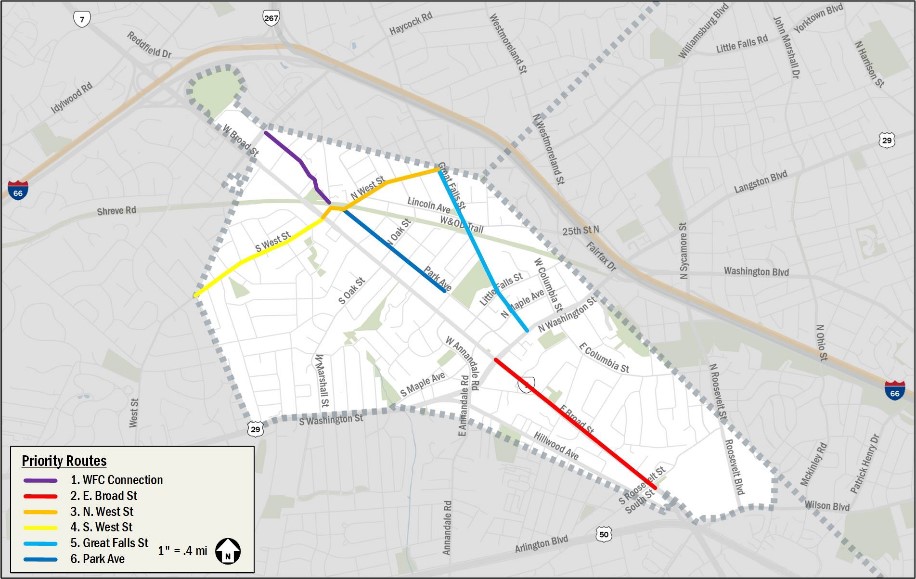
Other Future Bicycle Routes
As the City itself and plans at our borders have changed, so, too, do the most sensible bicycle routes need to be adjusted. The new plan will provide an updated map of the desired future comprehensive bicycle routes in the City, beyond the priority routes that are receiving more detailed planning.
Additional questions will need to be answered: Will the rest of the bicycle network connect the W&OD, planned bicycle facilities at our borders, and priority routes to every home and business in the City within reason? Are those routes creative and pragmatic, offering the best tradeoffs? Below is the City’s current working draft of that map.
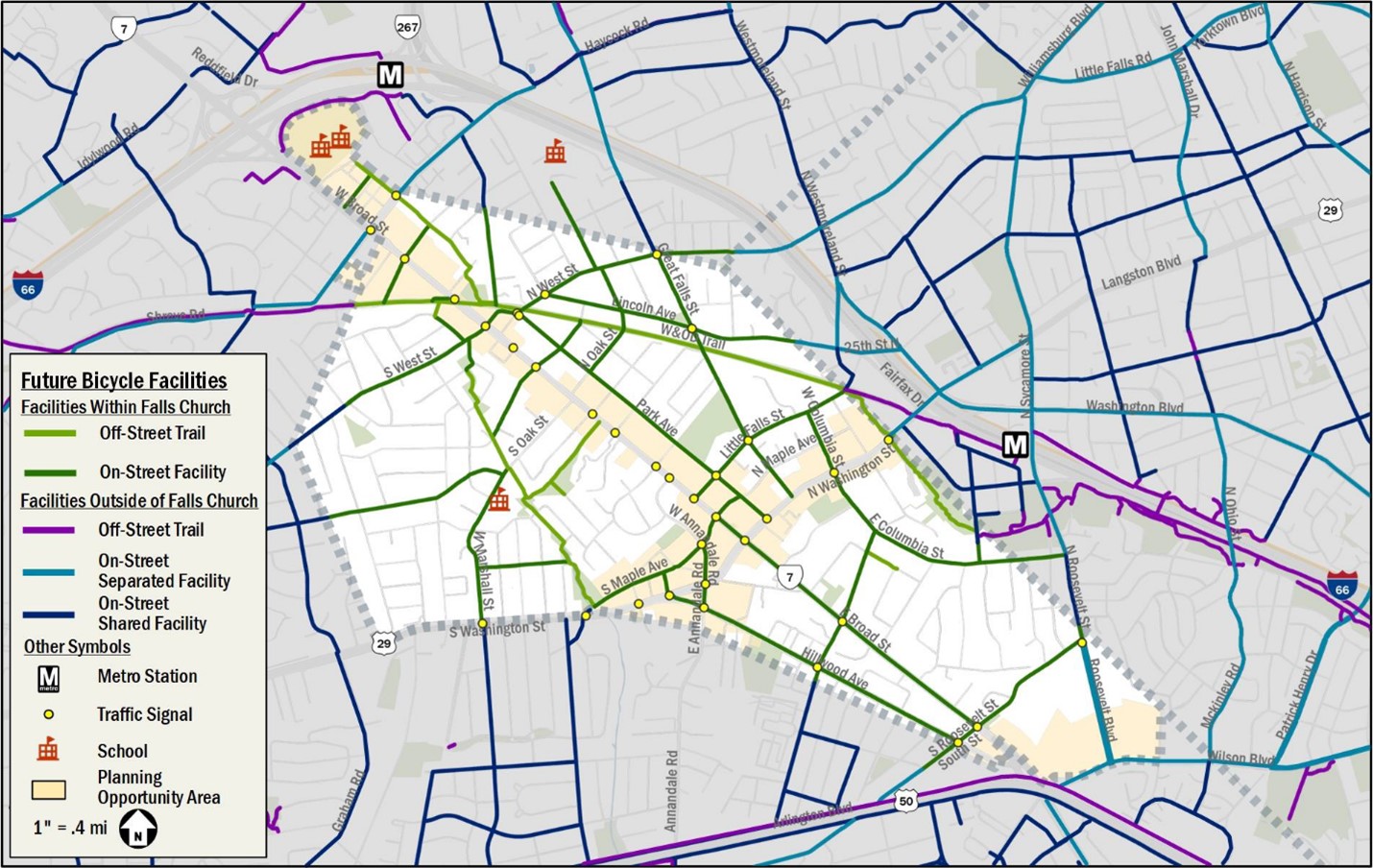
All Ages and Abilities
From the 1970s into the 2010s, the predominate mindset for bicycle planning in the United States was “vehicular cycling” – bicyclists should ride in the street like cars. With enough education, all drivers would behave safely and anyone would feel comfortable riding. The result has been that only the bravest (most foolish?) people ride bicycles outside of quiet neighborhoods or along paths like the W&OD. (See our prior blog post for more info)
Now the focus is on “all ages and abilities” – that a bicycle facility should feel comfortable for anyone aged 8 to 80, new rider or spandex-clad veteran. Will the 2024 Plan align with this standard? Are we OK with the tradeoffs where it does not (e.g., are there safe routes to school)? And who do we expect to use facilities that do not meet this standard?
Tradeoffs in use of public right of way
The key controversy in 2012 was car parking on residential streets (that plan would have removed all on-street parking from Hillwood Avenue, Lincoln Avenue, and West Street), and the 2015 plan was passed thanks to a late addition of a phrase noting that utilized on-street car parking would not be removed in favor of bicycle facilities. The City’s preferred method of traffic calming prior to the 2010s was on-street parking, because it narrows the roadway and slows vehicles. However, when utilization of parking is low as it is in many areas of the City, this strategy has proved ineffective (and thus, the need for the Neighborhood Traffic Calming program, among other projects).
For the priority routes in the 2024 plan, this will be an area to watch: Where is free car storage on public land an essential amenity to a resident or business and where are the community benefits of bicycle facilities more important (e.g., safety and comfort to let students and seniors see bicycling as a real option as well as traffic calming and pedestrian safety benefits)? An educated discussion of the alternatives and impacts, not one extreme or the other, will be important.
Education and encouragement
The 2015 Bicycle Master Plan included elements beyond bike lanes. The League of American Bicyclists’ feedback on the City’s application to be a Bike Friendly City (denied, but we got an honorable mention) got low marks in these areas. Will the 2024 Plan address all important areas, such as teaching elementary students how to safely ride a bike and all bicyclists to know and adhere to the traffic rules, signs, and signals that are needed to create a Bike Friendly Community?
Outlook for Community Engagement
So far, community engagement has been sought at the Farmer’s Market, Mary Ellen Henderson Middle School, Meridian High School, and several open house meetings at City Hall. Community members have also provided input at City Council and board and commission meetings. The original schedule called for approval of the 2024 Bicycle Master Plan by Council on June 10, 2024. Engagement with the public and Council this spring identified a desire for more time for engagement on the final product (which was still in draft as of the March 2024 community meeting) and engagement in the neighborhoods to be connected by better bicycle facilities.
Future meetings should be posted on the Bicycle Master Plan website. Also watch the City Council, CACT, and Planning Commission agendas as these are the venues where the draft plans have been discussed. Community meetings are scheduled this June. Finally, Chapter 8 of the FY2025-2030 Capital Improvements Plan, recently approved in this budget cycle, includes funding for the priority routes.
Summary of City Council and board and commission comments to date
Feedback from City Council and boards and commissions on the Bicycle Master Plan was broadly consistent across the different groups, with many overlapping or closely related comments. The key themes are:
- General interest in and support for creating a new plan, including an interest in better understanding specifics of bicycle infrastructure and what is needed to fund and implement it.
- Encouragement to staff to fully engage the community, in particular seeking out skeptics and those residents on affected streets early in the process.
- A desire to provide bicycle connections to business areas for economic, traffic, and climate benefits, and to the schools and particularly the Secondary Schools Campus where Mary Ellen Henderson Middle School and Meridian High School are located.
- Recognition that who and where people bike today is not the only group or routes to consider – that a lack of safe routes today means riding is not perceived as a real option by most people for many destinations.
- Appreciation that there will be tradeoffs in any design, including impacts to parking, but that there are win-win solutions and in-depth discussion is needed to make progress. Sometimes previously rejected or radical ideas may offer a way forward (e.g., easements, reuse of underutilized parking areas, repurposing of car travel lanes, less common designs such as advisory bike lanes, and/or the narrowing Broad Street).
- A desire to see the City achieve a high level of Bicycle Friendly Community status (as have neighboring jurisdictions Arlington, Washington DC, and Alexandria) with the master plan laying out the steps to get there – not just bike lanes but also such elements as bike parking, education, and encouragement.
Appendix: Detailed comments from City Council and involved boards or commissions
City Council (October 2, 2023):
Council reviewed the scope of the Bicycle Master Plan update in October. Every Council member who commented spoke in support. (Council Member Phil Duncan did not comment.) Everyone stressed the importance of community engagement and expectation setting, including engagement of skeptics early on. There was a desire to have a rough prioritization and cost estimate in time for consideration of the FY2025 budget in April 2024, which occurred.
Vice Mayor Letty Hardi and Council Member David Snyder noted that interactions between different travel modes, road designs, and ongoing projects need to be considered to find win-wins. Ms. Hardi pushed for the plan that includes metrics against which success can be measured and what we need to do to enable more bicycling beyond infrastructure and once-a-year events. Mayor Dave Tarter closed discussion by noting that while the City has made a lot of progress in other areas, bicycling hasn’t seen enough progress yet. For a city the size of a college campus with the W&OD running through it, he said, there is an opportunity here to seize.
City Council (February 5, 2024):
The objective of this discussion was to win Council support for the five priority bicycle routes as well as existing work on priority routes to the Secondary School Campus, Park Avenue, and Lincoln Avenue. Every Council member spoke in support of the plan overall and primarily raised questions about fostering strong community engagement, the comprehensiveness of the plan, and the need to get to the next level of budget detail. CACT Chair Erin Kampschroer and Member Arthur Agin emphasized the importance of developing implementation plans that will be executed.
Council Member Justine Underhill and Mayor Letty Hardi asked that the plan include actions to achieve Silver or Gold status as a Bike Friendly Community. Council Member David Snyder and Mayor Hardi recommended that the plan consider not just places that are uncomfortable to ride today, but where future bicycle connections either exist or will be important in the future (e.g., to Oak Street Elementary School, the West Falls Church Metro, and local businesses). Council Member Erin Flynn expressed a need for greater clarity on near-term plans, including funding needs and quick wins.
The City Council subsequently approved the FY25 Capital Improvements Program (CIP) on May 13, 2024, which includes funding into the early 2030s for implementation of the Bicycle Master Plan, though the specific priorities, cost per route, and timing are likely to change as the plan matures. [See the Pulse post, The Capital Improvement Program (CIP) 2025 and Beyond, May 16, 2024.)
Planning Commission (December 2023, March 2024):
Individual commissioners brought up similar themes at both meetings. Commissioner Andrea Caumont urged that the Bicycle Master Plan vision statement be inspiring enough to ensure that the plan lives up to the “all ages and abilities” standard and the Bike Friendly Community criteria so that the City creates appropriate conditions for more people to ride. She also stressed the importance of both the North and South West Street routes and an uninterrupted East-West route through the City.
Commissioner Sharon Friedlander focused on the need to connect the City’s southeast neighborhoods with biking facilities as few children bike to school because it feels so unsafe to cross East Broad Street. She noted that the proposed East Broad Street improvements are critical to creating this connectivity as well as improving pedestrian conditions there. Both Ms. Friedlander and Ms. Caumont emphasized the importance of getting the details right, with Ms. Friedlander pointing out that neighborhood engagement will be a key source of input.
Commissioner Tim Stevens said that the priority routes being designed now shouldn’t prevent opportunistic improvements, such as those proposed for South Maple Avenue as part of the Quinn Homestretch development, and that plans should include bicycle facilities for the forthcoming North Washington Street Project to connect to Arlington’s proposed bicycle path along Langston Boulevard and the new western entrance to the East Falls Church Metro station.
Commissioner Phil Duncan noted that he lives on South West Street and that it is probably time to try something new as past traffic calming efforts have not been consistent or made the City safer for bicycles. He observed that on-street parking utilization along West Street is generally low. He was not sure which design option was best but noted that East Broad Street is probably one of the easier places to start because all the residents he spoke with in that neighborhood are supportive. Mr. Duncan recommended engaging people in their neighborhoods to avoid the “pitchfork and bonfire” push back that arose against bike lanes in 2012. The City needs to explain the tradeoffs and have a conversation, he said.
Planning Commission Chair Rob Puentes voiced support for East Broad Street improvements and said that while he dislikes unused parking spaces, on-street parking has been the preferred traffic calming strategy in the City to date. Both he and Ms. Caumont are skeptical of sharrows as a viable biking solution.
Citizens Advisory Committee on Transportation, CACT (November 2023, December 2023, February 2024, March 2024):
The CACT has been heavily engaged in the Bicycle Master Plan since before the work kicked off. Its August 2022 memo lays out the committee’s hopes for the Bicycle Master Plan update. During the CACT meetings listed, member feedback focused on ensuring the plan was comprehensive (i.e., covered more than just bike lanes on five roads and included all the elements needed for Falls Church to become a Bicycle Friendly City), that it was implementable (i.e., had funding and specific objectives to which the City could be held accountable), and that it focused on pragmatic routes that met the “all ages and abilities” standard.
The CACT has engaged deeply on the design options presented, suggesting alternatives and ideas and looking for ways to balance competing demands for roadway space. The committee also worked to ensure that the Bicycle Master Plan links well to other City plans (e.g., sidewalk improvements) and that it meets National Association of City Transportation Officials (NACTO) and Complete Streets standards.
Environmental Sustainability Council, ESC (November 2023, March 2024):
November 2023 discussion focused on educating the ESC about the scope and some of the types of bicycle facilities available. ESC members encouraged staff to consider end-of-trip facilities, particularly bicycle parking, noting that some destinations like the Broaddale Shopping Center (Chipotle and Starbucks) lack bike parking. Members asked about the potential for bicycle facilities on Broad Street and Washington Street in order to provide access to businesses.
The March 2024 discussion continued this theme, with the ESC’s emphasis on access to businesses and the ability to replace car trips with biking. The ESC encouraged getting broad community feedback, but asserted that the final decision should not be solely up to homeowners along affected streets. Instead, consideration needs to be given to parking impacts and how to mitigate them, local and regional climate goals, and other objectives that are broader than individual neighborhoods. ESC members suggested that the plan include steps to achieve a high rating as a Bicycle Friendly Community and that it tie into the approved Community Energy Action Plan actions and goals.
Economic Development Authority, EDA (December 2023):
EDA members made it clear that the lens they are obliged to take first is the economic impact of bicycles. There was significant interest and discussion around bicycle facilities on Broad Street, a bicycle link to Seven Corners and Eden Center (along East Broad Street), a bicycle link to West Falls and the Secondary Schools Campus, and bridging (literally or figuratively) busy roads like Broad Street and Haycock Road. Discussion also touched on the importance of making it easy for bicyclists on the W&OD to access City businesses, with signage and attractive routes into the City.
References
- Bicycle Master Plan City Website.
- Bicycle Wayfinding & Sharrows, Park & Maple Avenues, Project Website (from 2013).
- Bicycle Routes Implementation Website (from 2017).
- Current Bicycle Master Plan, adopted July 13, 2015.
- Existing Conditions Study, December 2023.
- Bicycle Master Plan Markup.(Clean Version), March 2024.
- Priority Route Options, City of Falls Church Bike Master Plan Update, March 8, 2024.
- Bike Falls Church tracker of all bicycle-related projects in the City (updated December 2023).
